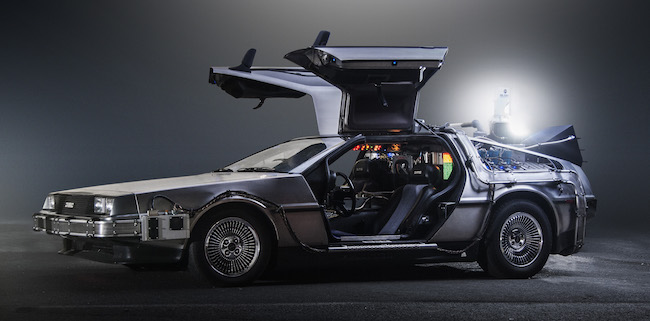Think back to the American automobile market ca. 1981… What’s the first thought that comes to mind?
Nothing yet? Here’s a hint: the Back to the Future films.
That’s right — The DeLorean DMC-12.
What makes this car, or time machine if you will, so remarkable? Its entire body is made from stainless steel, allowing it to stay rust-free and looking brand new for the entirety of its life. Keep reading below to learn more about the history of stainless steel and what exactly makes stainless steel different from any other metal.
What is Stainless Steel?
Stainless steel can be several variations of a mixture of steel alloys (a combination of two or more metals) with its constituents including at least 10.5% chromium and less than 1% carbon. The importance of such a specific amount of each element gives stainless steel its most valuable quality: the resistance against rust build-up and corrosion. A passive film of chromium oxide coats the steel surface, giving it that perfectly smooth and non-abrasive texture.
When was Stainless Steel Invented?
Although the production and smelting of steel has been around for over 4,000 years, the road to discovery of stainless steel was tedious. It took scientists almost 100 years to create a faultless combination of metals that could withstand corrosion and exposure to environments with high moisture levels that commonly cause surface stains:
1821: Scientist, Pierre Berthier, discovered that iron-chromium alloys were resistant against select acids
1872: Two Englishmen created an iron alloy of 35% chromium and 2% tungsten which is considered to be a type of stainless steel
1904: French scientist Leon Guillet created a flawless stainless steel but did not note its resistive characteristics against corrosion
1911: Two scientists discovered the correlation between 10.5% chromium and corrosion resistance
1913: Harry Brearley created a steel made of 12.8% chromium and .24% carbon which is arguably the first stainless steel ever made which was also heavily incorporated into industrial development
Stainless Steel still Continues to Evolve
Why do we Need Stainless Steel?
Although we may not realize it, stainless steel benefits and simplifies our lives as humans from several different angles. We would be in serious trouble without these products and processes today on which we have become extremely dependent:
- Stainless Steel At home: Kitchen appliances, kitchen knives, sinks, pots/pans, home heating systems
- Stainless Steel in Construction: Handrails, roofing material, street lights
- Stainless Steel in Water: Hot water tanks, water-related tubing
- Stainless Steel in Medicine: MRI scanners, surgical instruments
- Stainless Steel in Transportation: Head gaskets, exhaust systems, road/rail tankers or containers
- Stainless Steel in Food/Drink: Brewing, distilling, food processing
The Benefits of Using Stainless Steel Products
- High and low temperature tolerance
- Resistance against tarnish, stains, rust, and corrosion
- Relatively strong
- Highly sanitary
- Easy fabrication
- Easy to uphold/ maintains looks over time (which also means- good value for your money!)
- 100% Recyclable
How is Stainless Steel Made?
Here is a short, yet detailed and informative video on the step-by-step manufacturing process behind stainless steel:
What was Invented the Same Time as Stainless Steel?
- 1911: Automobile ignition system, the first seaplane
- 1912: Life Savers, motorized movie cameras
- 1913: The zipper, the first passenger airplane
All-in-all, John DeLorean had the right idea when he designed the DeLorean DMC-12 with its forever-famous stainless steel body. He was aiming for durability, longevity, and ease of maintenance; which any person desires when shopping for a car.
Premier Handling Solutions had similar ideas in mind when designing our Industrial Hygiene Equipment. Risk of contamination is drastically lowered by constructing the equipment with nothing other than a stainless steel body.




